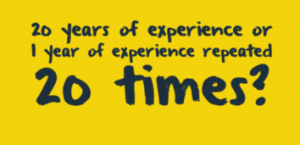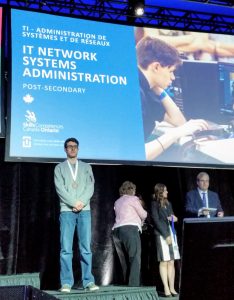The other day I was driving my better half’s car. I don’t usually drive it and it’s still relatively new so each time is an adventure. It was a busy day on the main street of our village, so I was parallel parking into a spot with a row of traffic lined up behind me. It’s a smallish vehicle so this is pretty straightforward, or it would be. Shifting into reverse I backed in to the spot only to have the emergency warning systems start bleeping at me frantically whenever a car passed by. This system is supposed to be there to make the car safer, but in interrupting my parking process repeatedly it actually kept stopping me because I thought we were about to have an impending impact. I’d have been better off without the frantic bleeping and would have parked the car more efficiently, quickly and safely without it.
| It’s a pretty thing and very efficient for what it is, but this Buick likes to get in the way of my driving process. |
Pulling out after our stop I backed up to clear the car in front and the mirrors aimed down – I presume to make sure I’m not running over any small animals, but when I started driving forward all I could see out of the wing mirror was the ground, which isn’t very helpful when I’m trying to pull out. I’d have been better off without the squirrel saving rear view mirrors. I can always actually move my head if I want to see down through the mirror, it doesn’t need to move at all. The worst part about all of these interrupting technologies is that in addition to actually making driving more difficult, they are also another thing to break over the life of a car.
I’m all about technology assisting a process, I’m happy to use the rear view camera to make centimeter perfect parking, but there is a big difference between interfering and assisting. When you’re backing a car up and it starts bleeping at you about impending impacts that aren’t happening it isn’t helping, it’s introducing false and interrupting signal to your process. When your car aims its mirrors at the ground and then leaves them there thus preventing you from using them to assess incoming threats, they are a hazard rather than a help.
This ‘we’ll do it for you‘ technology sets all sorts of dangerous precedents:
This ad doesn’t make me think, gee, I need a Kia so when I’m operating a two ton vehicle like a clueless git it’ll save me from myself! It does suggest that there should be far fewer people with valid licenses on the road. Driver intervention tools like this muddy the line between expectations of driver competence and technology’s ability to take care of things. How often do educational technologies do the same thing in the classroom?
But what about technology like anti-lock brakes that actually outperform most people in emergency situations? I pride myself on my ability to modulate brakes very effectively, but modern anti-lock systems are so capable that I can’t keep up, and I consider them a requirement on a modern car. This isn’t an anti-technology rant, technology should be able to help us do things better, but when it doesn’t it drives me around the bend, and it doesn’t whenever it tries to do too much for us, and especially when it starts to assume responsibility for the very human parts of driving (like paying attention), or the very human parts of learning, like demonstrating skills.
Self driving cars are on the horizon. For many people this will be a great relief. Those who hate driving and do it poorly will all be better off for it, and so will the rest of us when they are no longer operating a vehicle. I have no doubt that for the vast majority self-driving cars will drastically reduce accidents, but they also mean those of us who are willing and capable lose the chance to learn how to do something well. The fact that I can toss pretty much anything into a parallel parking spot (I did in in a van… in Japan… with the steering on the wrong side) is a point of pride and a skill I took years to develop. If machines end up doing all the difficult things for us, what’s left for us to do well? If machines end up demonstrating our learning for us, what’s left for us to learn?
Based on what I’ve seen recently, I’m more worried that machines will unbalance and panic us while they are taking care of us. I don’t look forward to that future at all. Perhaps clueless, bad drivers won’t notice any of this and will do what they’re doing now, minus the actually controlling the car part. Perhaps poor learners will happily let AI write their papers and answer their math quizzes, and never have an idea if what they’re doing for them is right or not.
I often frustrate people by second guessing GPS. Mainly it’s because I know how hokey the software is that runs it, so I doubt what it’s telling me. When GPS steers me up a dead end road I’m not surprised. Maybe I’ll feel better about it when an advanced AI is writing the software and it isn’t full of human programming errors. When that happens maybe it won’t matter how useless the people are. There’s a thought.
I’m a big fan of technology support in human action, but it should be used to improve performance, not reduce effort and expectation. It should especially not damage my ability to operate a vehicle effectively. The same might be said for educational technology. If it’s assisting me in becoming a better learner, then I’m all for it, but if it’s replacing me as a learner, or worse, interfering with my ability to learn, then the future is bleak indeed.
from Blogger http://ift.tt/2A9hsIW
via IFTTT







